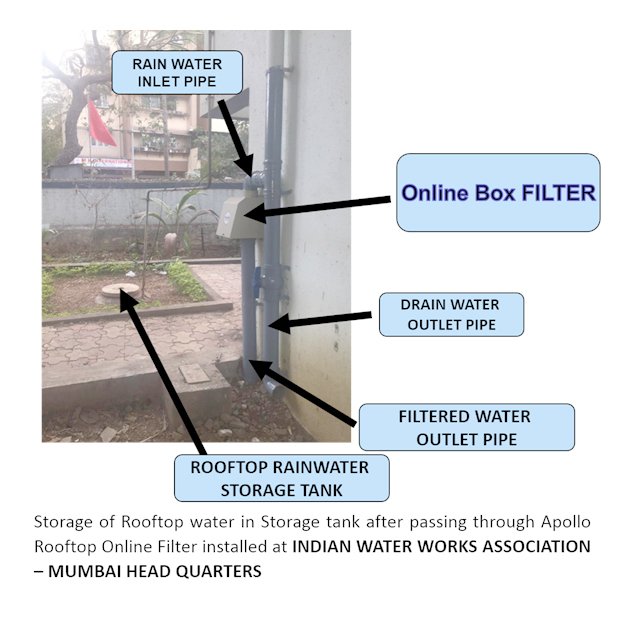There are three methods of harvesting rain water as given below:
In place where the rains occur throughout the year, rain water can be stored in tanks. However, at places where rains are for 2 to 3 months, huge volume of storage tanks would have to be provided. In such places, it will be more appropriate to use rain water to recharge ground water aquifers rather than to go for storage. If the strata is impermeable, then storing rain water in storage tanks for direct use is a better method. Before storing rainwater in storage tanks rainwater should pass through Apollo Rooftop Online Filter installed at Rooftop Downtake pipe.


Rain water that is collected on the roof top of the building may be diverted by drain pipes to a filtration tank (for bore well, through settlement tank) from which it flows into the recharge well. This method of rain water harvesting is preferable in the areas where the rainfall occurs only for a short period in a year and water table is at a shallow depth.
The rain water that is collected from the open areas may be diverted by drain pipes to a recharge dug well / bore well. Apollo Vee Wire Filter Kit/ Rainwater Filter Kit is installed at the mouth of Borewell so that filtered water is recharged into Ground without contaminating Ground Water Table. The abandoned bore well/dug well can be used cost effectively for this purpose.
